The world is stuck right in the middle of a pandemic, which has had very different effects for the different industries. In some industries, companies are struggling to survive while others thrive. Many companies are experiencing extreme uncertainties regarding future developments. Flexibility and resilience must be two of the most important qualities organizations require to drive the changes or cope with them. Changes are always implemented by means of projects, which is why there are currently more projects than ever before. The topics of project management, portfolio management, resource management and PMO are therefore more important than ever. Companies that have established processes, methods and tools for these areas will be able to benefit from the inherent advantages in times like these. This applies regardless of whether one has to start new projects or one has to concentrate on the crucial ones and stop all unimportant ones in good time. For both cases, we have compiled 12 project management trends which are the most important in our view. This can help you keep your project landscape under control or gain control of it, even in 2021.
In this article, we want to share with you our current opinions and experiences. These are based on our client projects, seminars, and discussions relating to the latest developments and forthcoming trends.
Based on these assessments and forecasts you will be able to choose the right strategies for your environment. You may find that this article simply confirms your ideas regarding the future of project management. In case you are missing the AI topic here: while we do see various experiments with chatbots, it is too early to derive any actually useful trends for practical application.
Trend 1) Call for Complete Resource Planning
Let us start by accepting that the problem of resource scarcity is not going to get any better. There are those who still have too few employees and those who suddenly have too many. The trend toward optimizing the workloads of the available employees will continue. Those responsible will have to keep trying to make the unpredictable predictable.
To do so, they need to know what their employees are currently busy doing – not just in projects but also with the ongoing daily operations. Involving team leaders in the coordination between project and line management is essential. Only by looking at both perspectives will the resource planning be complete and therefore reliable.
To make matters worse, new demands for projects and fields of expertise appear at increasingly shorter intervals. Greater flexibility in strategic capacity planning is required.
For this reason, PMO (project management office) and portfolio managers require even better support in variable scenario planning. They need to decide, based on the priorities and availabilities of the coming months and years, which new projects to launch and when. Some also have to be very flexible in postponing projects and bowing to the new external circumstances.
There is a growing awareness that rough yet complete resource planning is more helpful for this purpose than precise planning for only a few projects. The rule of thumb “complete and sufficient” is increasingly acceptable.
Trend 2) Sharing Knowledge Will Take You Further
Resource conflicts arise from not having enough suitable staff members to assign concurrently. The more similar the skill sets of the available staff members, the easier it is to assign them. This automatically minimizes the conflicts.
So, the problem is not the actual number of people available but rather the scarcity of certain skills. To counteract this, you should ensure that the experts share their knowledge at least within the individual teams. Although it may be faster to do something yourself in the short term, in the long term things go faster if you have shared your knowledge with others.
In agile environments, this mindset is the norm. Yet for many established traditional organizational structures, adopting this kind of thinking will be a major challenge. This is happening more and more though across all industries, especially among the younger generation.
Trend 3) Fixed Teams Deliver Better Results
Agile teams are, by definition, fixed teams that truly work together to deliver usable results. They define the feasibility and scope of the expected result and divide this into sprints. This ensures greater clarity in what can realistically be achieved and what can’t. Everyone involved knows their own capabilities, what they can depend on, and where there are doubts. In this situation, it is much easier for team members to share their expertise within their familiar, trusted team.
The agile methodology demands that the outcome be a usable result. However, this result can deviate from the original plan if the customer agrees. Most important is that the result be useful and achievable.
In the end, those responsible are expected to keep their promise, which means that they should not make unrealistic promises in the beginning. The key to success here is the team’s continuity together with the team’s sense of responsibility.
In addition, there is the iterative collaboration of the product owner and / or project manager together with the stakeholders and frequent feedback. Whether or not this will continue to be called agile or not is unimportant: Reliability is a valuable asset, not just in uncertain times. The insight that this is easier to achieve in fixed teams continues to gains ground.
Trend 4) Cross-Company Projects Favor Cloud Solutions
What if your company lacks the necessary knowledge, particularly in some areas of the ubiquitous digitization? Knowledge cannot be shared if it does not exist. So, the “make or buy” question will gain importance in the future.
At the same time, the choice of flexibly usable components has grown in many industries. Joint developments across companies are therefore becoming increasingly common. We believe cross-company collaboration in projects will continue to increase.
This is also an important driver that will further intensify the use of PPM software in the cloud. Cloud solutions facilitate this kind of collaboration, at least from a technical point of view. Licensing is also easy in this case, as each company involved pays its own share of the temporary licenses. Alternatively, these licenses can be invoiced in a transparent way.
Trend 5) More Customer Projects with Agile Implementation
Among customers, there is great uncertainty about what and how to order in today’s VUCA world. Thus, the trend goes towards more and more agile development orders in collaboration with other departments or companies.
This is less and less about complying with a fixed specification. After all, such a specification is not yet available at the time of ordering. Increasingly, projects are about ensuring the benefit of a deliverable, as formulated by the customer, with the aid of agile methods.
This trend can be observed across many industries, even far removed from software products. Yet, the growing software component in products and solutions is a decisive driver for the dissemination of agile methods. Though this trend is not new, it is still far from its peak.
Trend 6) Traditional and Agile Tools Are Best Used Together
Another software tool trend for the coming years is the effort to blend traditional and agile functions. Developers of traditional systems are working to add agile functions such as Kanban boards, sprints, and burn-down charts.
Those in the agile world are adding bar charts for top-level sprint planning and are making inroads into the area of portfolio management and resource management. So far, however, the efforts to blend the two have not yet really been successful.
We are often asked to depict projects using phases and milestones for external use, but with sprints for internal use. It would therefore make more sense to concurrently use tools for project management and work management together. Make sure, however, that you integrate these tools to ensure that data are shared efficiently between the diverse IT landscapes.
Due to the distributed workplaces between working from home and at the office, cloud solutions are clearly on the rise.
Trend 7) Open-Ended Results Deliver Greater Benefits
The attempt to complete complex projects by a fixed deadline with what appears to be clear specifications has failed often enough. This costly learning experience, once made, increases the appreciation for the frequently discussed open-ended results that characterize agile approaches as opposed to traditional fixed goals.
The openness towards the ultimate result found in agile approaches can deliver a generally accepted result with a greater benefit than the originally intended goal would have done. This benefit is thanks to the frequent coordination discussions between the customer, project manager, and project team. These discussions provide clarity on the desired and feasible results.
Frequent coordination discussions are theoretically possible in traditional projects as well, but usually do not happen. In agile teams, however, this is actually done.
With traditional methods, it can happen that the targeted goal does not deliver the intended benefit, which means that in the end there is less success or satisfaction. We think this insight will gain acceptance.
In projects with yet uncertain goals, it pays to push for an agile approach right from the start! You will not miss the apparently clear goal, but rather achieve the goal that was mutually set.
Trend 8) Project Managers Are Accountable for More Than the Result only
The logical implication of the above trend is that the project manager has a greater influence on the final outcome when using agile methods. After all, the goals are formulated during the course of the project.
Future project managers will therefore not only be responsible for the individual deliverable. They will also be responsible for ensuring the benefit that these deliverables are supposed to provide. In the future, economic objectives will have to be accompanied by ecological and social aspects in the interest of sustainable use.
This will demand a whole new set of skills from future project managers. Communication skills in particular are becoming more and more important to motivate the various knowledge carriers and suppliers to work towards the same goal. Management is not made easier for project managers by the fact that at present and probably also in the future teams are working from different places instead of sitting in a shared office.
So, make sure that you take this trend into account when creating a training plan for future project managers.
Trend 9) Change Management Alongside Project Management
In years past, project management was used primarily to produce achievable results. The projects were successful when the deliverables were received as ordered.
In today’s digital world, a project can also involve numerous organizational changes. To ensure that these projects are successful as well, it is important to handle the organizational changes with the same respect as the contextual ones.
Ensure that the people affected by these changes are sufficiently prepared and supported. This needs to be done right from the beginning when planning the project.
Whether managing these changes is also the responsibility of the project manager depends on the scope of these changes and the number of people affected. However, it probably is a good idea to obtain the services of a change management specialist in such cases. This idea is not new, but nowadays it is not merely discussed but also acted upon.
Trend 10) PMO Trend towards Increased Responsibility
Without standardized methods, processes and tools, there will be no success in multi-project management – neither with a traditional nor with an agile approach. If you are going to implement organizational changes as well, it is important to carefully plan and manage these changes. The PMO will be held far more accountable for this than was previously the case.
Digitization has led to projects in areas that were previously handled by operations without the need for project management. By allowing the PMO to lay the groundwork, you enable this integration to go smoothly.
There is a trend to let the PMO set the pace across departments with regard to producing results in and around projects – along the company’s entire value chain. Resource management has thereby grown in importance for the PMO. Perhaps, CEOs, CTOs and CIOs will soon be joined by CPOs who are responsible for project management at the top level.
Trend 11) Cultural Change towards Accepting Successful Failure
PMOs are bearing increasing responsibility for implementing strategic targets. However, they can only achieve this if the resource situation permits it. To this end, the PMO needs an enterprise-wide overview of the available skills. In the future, the skills will have to be assigned more dynamically to the strategically important projects.
This means that projects now deemed less viable will need to be aborted. After all, purposefully aborting a project makes staff available for projects with a higher priority. The catchphrase “Fail Cheap” is not new in this context. However, it does encourage the cultural changes needed to accept a successful failure.
What is it like at your company? Is it ok to abort a project when this is justified? Is it still viewed as the project manager’s failure? Work to ensure that the necessary cultural changes are adopted.
Maybe Peter Drucker’s observation that “Culture eats strategy for breakfast” will help you emphasize the importance in your company.
Trend 12) Change Is Acceptable If You Understand Why It Is Needed
New organizational structures, enjoyable work, and self-determination are greatly valued by many employees these days. There now more organizations than ever who use agile, modern work methods.
However, many people still prefer traditional leadership styles and there are numerous projects that can be handled more effectively using traditional methods. This is ok. After all, there will be a need for pioneers as well as settlers – even in the future.
However, change is a constant – always and everywhere – and sometimes there are greater changes and sometimes lesser ones. It is helpful to understand that most of the people who reject change do so because they do not see the sense in it. If you make it clear to them right from the start why the change is necessary, it is later much easier to explain what changes are coming and how these will be handled.
In our opinion, “Explain, don’t demand” is the most important trend – one that will also continue to rapidly gain importance in the future for project management.






Recent Comments